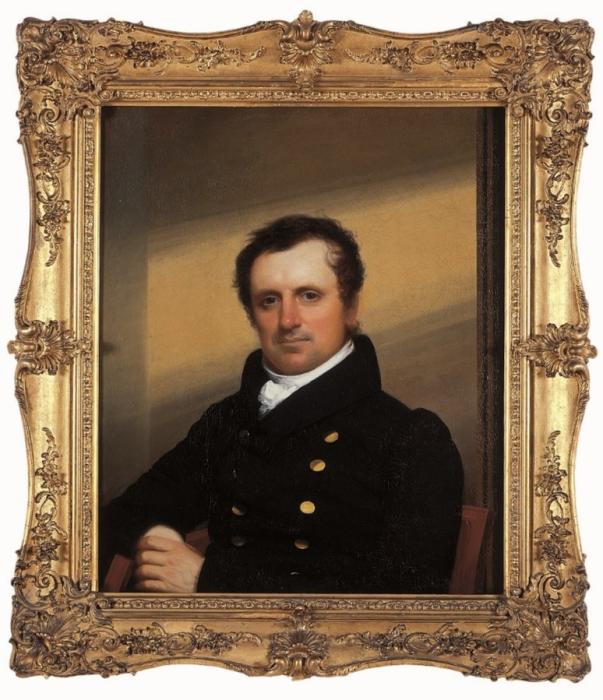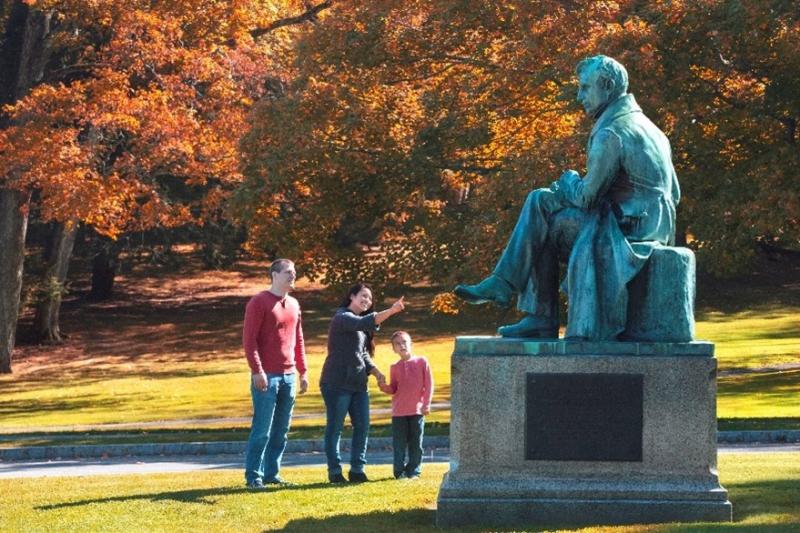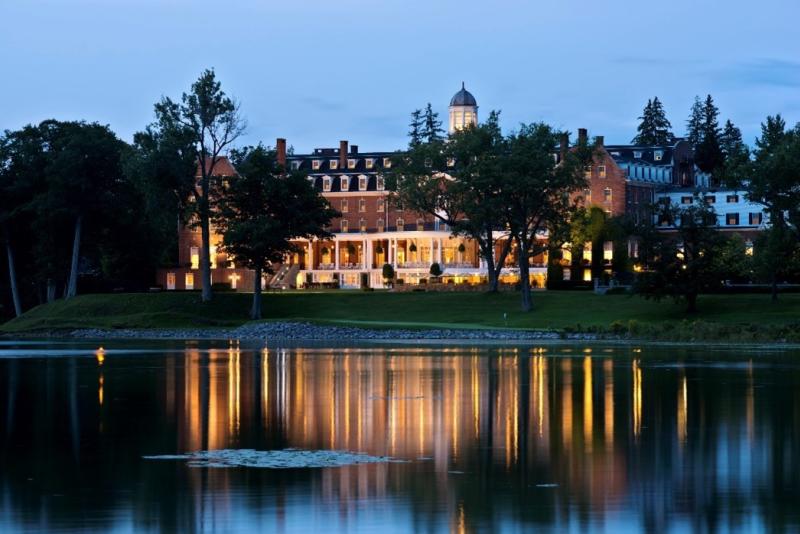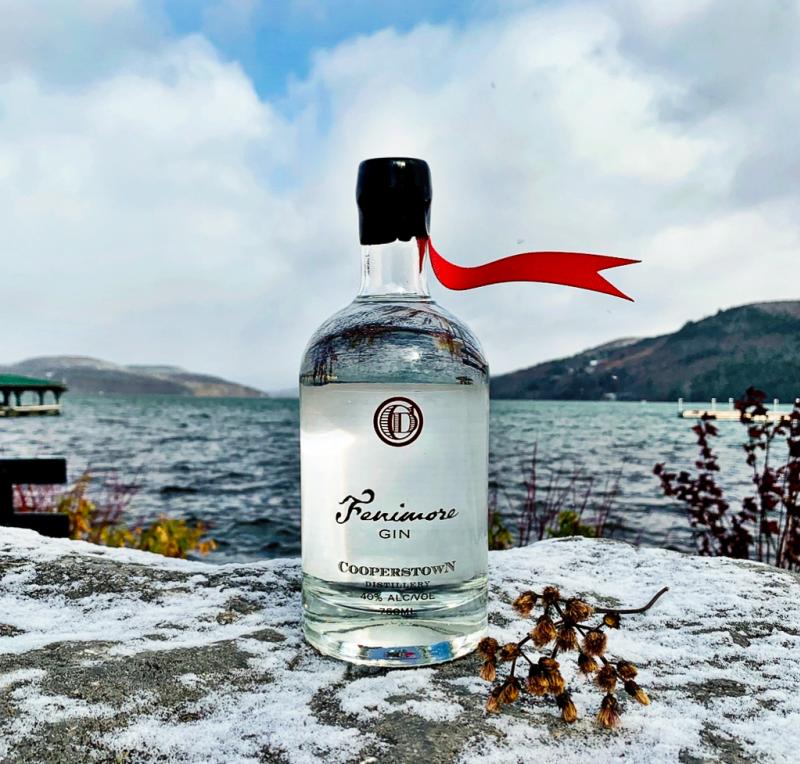Cooperstown, New York, Was Both Home and Inspiration to American Author James Fenimore Cooper.
By the Book
You know you can always count on us to draw your attention to those random holidays that probably don’t show up on anyone’s calendars but ours. That’s why we’re telling you that next Monday, November 1, is National Author’s Day. In 1949, the U.S. Department of Commerce set aside that day to celebrate American authors.
When I was a kid, one of my very favorite games was “Authors.” It was a card game much like “Go Fish,” only you were collecting cards that bore the picture of a famous American or British author. Each of the 11 writers appeared on four cards, and each card was marked with the name of one of their most famous works. Your goal was to collect all four works from each writer. The authors were Louisa May Alcott; James Fenimore Cooper; Charles Dickens; Nathaniel Hawthorne; Washington Irving; Henry Wadsworth Longfellow; Sir Walter Scott; William Shakespeare; Robert Louis Stevenson; Alfred, Lord Tennyson; and Mark Twain.
The one author in the deck whose works never appeared on my school reading lists or in my stack of library books was James Fenimore Cooper. And that’s a little ironic, considering that today my PR agency represents the town named for his family. This is the guy who’s considered by many critics to have written the first-ever “Great American Novel,” The Last of the Mohicans, and I knew remarkably little about him until a few years ago. So, today I’m going to hit you with the knowledge I’ve gained during my time working with “his” town.
I’m going to preface this entire release by saying that there’s a legit reason why Cooper’s novels aren’t as widely read or taught these days. The author has been widely criticized for his stereotypical portrayals of indigenous people, and we want to acknowledge that here – and not appear to be champions of it. That said, here’s what I now know about James Fenimore Cooper:
William Cooper was a politician and judge who moved his family to a little village in New York state back in 1790 when his son James was just a year old. The town was ultimately named for the family, and though James -- the eleventh of the dozen children born to William and his wife Elizabeth (whose maiden name was Fenimore) – was born in Burlington, New Jersey, and lived in New York City and Europe during his adult life, he ultimately returned to Cooperstown and lived his final years there. It was forever his home … and his inspiration.
Though Cooper wrote dozens of novels about various topics, you’re probably most familiar with the five-part collection he called “The Leatherstocking Tales.” He began penning that series in 1823, just three years after he became an author. It follows the life and adventures of Natty Bumppo, a white American frontiersman who forges a kinship with the Native Americans who live nearby. The series jumps back and forth through time, starting with The Pioneers, when Natty – affectionately called both “Leatherstocking” and “Hawkeye” – is an old man. The novel met with such success that Cooper kept the character and visited him at different times in his life in the series’ other novels, which were (confusingly) not written in chronological order.

This is James Fenimore Cooper in his younger years. The portrait is on display at Fenimore Art Museum.
Many of the physical details of the land that Natty explores in “The Leatherstocking Tales” are pulled from Cooper’s own memories of growing up in the early years of Cooperstown when it was a woodsy frontier full of adventure. People believe that Natty himself is based on a man named David Shipman, a veteran of the Revolutionary War and local hunter whom Cooper would have known because he provided venison and other food to families in the village. (Also, the author’s own father even showed up in The Pioneers as the character Judge Temple.)
So, Cooper drew inspiration from his hometown and its residents. And as it turns out, Cooperstown drew inspiration from its favorite author, as evidenced by the names of sites all around the village. Here’s a rundown:
- James Fenimore Cooper Statue: Since 1940 – 150 years after the author arrived in town as a toddler – a giant bronze statue of Cooper has been the focal point of Cooper Grounds, just steps away from the National Baseball Hall of Fame and Museum. He’s perched on a rock and bundled up for cold weather, wrapped in a big coat and holding his top hat and cane. The statue was sculpted by Victor Salvatore, who lived in the nearby village of Springfield Center. The small model Salvatore used in the design process is on display at Fenimore Art Museum.

James Fenimore Cooper has a permanent perch near the National Baseball Hall of Fame and Museum.
Photo credit: Chip Henderson
- Fenimore Art Museum: If you’re interested in Cooper’s life and accomplishments, head to this museum – located on the site of his former homestead – and check out “The Coopers of Cooperstown,” a permanent exhibit that celebrates the author and his family. The museum also houses impressive collections of American folk art and American fine art, photography, and The Thaw Collection of American Indian Art. More than 850 objects that celebrate American Indian culture have a home here at Cooper’s former property.
- Leatherstocking Golf Course: You’ll find this legendary course right next door to the art museum. Named for Cooper’s famed book series and designed in 1909 by prolific golf course architect Devereux Emmet, this is considered one of the East Coast’s most challenging resort golf courses. The 72-par, championship golf course challenges golfers of all skill levels and features 18 holes of rolling terrain and elevation changes. It finishes along the shoreline of Otsego Lake and is famous for its 18th hole. The golf course is part of The Otesaga Resort Hotel.
- The Otesaga Resort Hotel: You’ll find both Hawkeye Bar & Grill and Hawkeye Spa at this resort, which for more than 100 years has been one of the most celebrated hotels in the Northeast. It sits on some of the best real estate in town, on the shores of Otsego Lake, which Cooper nicknamed “Glimmerglass” and references repeatedly in “The Leatherstocking Tales.” Indeed, the surface of the lake acts as nature’s mirror, beautifully reflecting the trees around it and the sky above. The dining room where The Otesaga’s famed breakfast is served is called Glimmerglass.

The Otesaga Resort Hotel is located on prime real estate … right on the shores of Otsego Lake.
- Glimmerglass Festival: Also bearing the lake’s nickname, this celebration of the arts is a huge draw for summertime visitors. Though it used to offer opera only, in recent years it has expanded to encompass a wide variety of live performances, which take place in a 918-seat theater whose side walls can be slid open so the audience can enjoy the beauty and fresh air of the region. The festival’s campus is located at the extreme northern end of the nine-mile Otsego Lake.
- Glimmerglass State Park: That stunning lake is the major draw at this park, whose water and woods are home to a variety of plants and animals, including New York’s state mammal, the beaver. The Beaver Pond Nature Trail is a popular hike, and other highlights include a covered bridge (the oldest existing covered bridge in America) and Hyde Hall Mansion, a historic home that’s open for tours. (Halloween alert: It’s also reported to be haunted.) The park is stunning all year long, including in the winter months, when visitors can go cross-country skiing, snowshoeing, ice skating or ice fishing.
- The Glimmerglass Queen: This seasonal boat tour, which departs from the dock at the end of Fair Street, takes guests on a scenic cruise around Otsego Lake, giving them the chance to see both natural and manmade wonders along the way. A boat is the only (legal) way for visitors to catch a glimpse of the famed Kingfisher Tower, a 60-foot Gothic structure erected in 1876. It’s located on private property, so approaching by land is a no-no … but it makes a great backdrop for photos taken during this cruise, which departs daily during warmer seasons.
- Cooperstown Distillery: The only distillery in Otsego County takes pride in its hometown, naming its products for things with meaningful ties to this village … and that includes the game of baseball and the area’s favorite author. The distillery’s Glimmerglass Vodka is as clear as Cooper’s favorite lake; it’s distilled six times and charcoal-filtered twice, resulting in an incredibly smooth drink. Meanwhile, Fenimore Gin incorporates 14 different botanicals – from the expected juniper berry to the surprising lilac (New York’s state bush) – to create a gin that appeals to fans of both traditional and non-traditional gins. The distillery itself is on Railroad Avenue and open daily, or you can do a tasting at the Cooperstown Beverage Exchange on Main Street in the heart of the village.

Fenimore Gin is just one of the Cooperstown Distillery products that pay tribute to the author and his works. Photo Credit: Tamara Stines.
- Natty Bumppo’s: This casual restaurant and bar on Hoffman Street is a quick walk from the National Baseball Hall of Fame. It’s decorated with a mural of Otsego Lake and plenty of antique fishing gear and other artifacts inside, but it also offers an outdoor deck. The menu is focused on Latin American cuisine and craft beers and cocktails.
- Natty Bumppo Marker: On Route 26, in the village of Fly Creek (just beyond Cooperstown), you can find a sign marking the burial site of David Shipman, the local hunter who shared stories of his abundant adventures – including encounters with wild animals and plenty of battles – when he visited the Cooper home. He was known to wear leather stockings and deer hide, just as “Hawkeye” does in the novels. He died in 1813 but lives on in Cooper’s novels.
- James Fenimore Cooper’s Grave: The author himself is buried in a family plot at the cemetery at Christ Church, the Episcopal church on River Street in the village. His tombstone bears the simple inscription of the dates of his birth and death; ironically, he died just one day before his 62nd birthday. Other members of the Cooper family – including his father William – are buried near the author. Cooper’s wife, Susan, who died just a few months after he did, is buried next to him.
It should also be noted that an impressive number of children and dogs in the village are named “Cooper.” So, if you’re walking down the street and hear someone shout the name, they may be talking about the author … or maybe just another member of their family.
In case this has inspired you to check out other sites tied to American authors, here’s a listing that my colleague Mallory pulled together. We limited the geography to the Northeast and Mid-Atlantic so you could potentially make an interesting road trip out of it … and visit a lot of sites tied to the other American authors who were acknowledged in that old card game.
# # #
ABOUT COOPERSTOWN AND OTSEGO COUNTY, NEW YORK
Cooperstown, New York, is best known as the home of the National Baseball Hall of Fame and Museum, but this region is about so much more than America’s favorite pastime. Otsego County is situated in Central New York state, and it’s where you’ll find an array of charming villages and towns with memorable names like Fly Creek and Cherry Valley. All are worth a visit. What first put us on the map – before baseball took to our fields – was the growing of hops for beer, and our rich farming heritage continues today. That means our restaurants, breweries, and distilleries are top-notch. Then again, we think our outdoor adventures, historic sites, and cultural offerings are champs, too. We’re located about 200 miles northwest of New York City and 75 miles west of the state capital in Albany. We invite you to run – or drive, take the train or fly – to our home base. Start your training with a visit to www.ThisIsCooperstown.com.